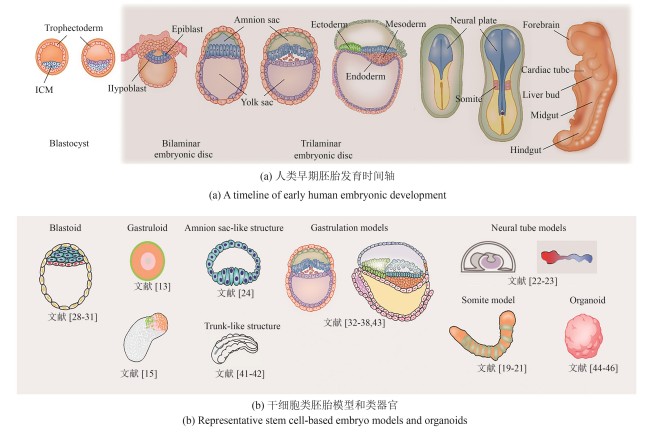合成生物学在干细胞早期胚胎发育模型中的应用
Applications of synthetic biology to stem-cell-derived modeling of early embryonic development
(人类胚胎发育始于囊胚着床于子宫壁,随后形成由上胚层和下胚层构成的双胚层胚盘。原肠胚形成过程将其转变为三胚层结构:外胚层、中胚层和内胚层,为早期器官发生奠定基础。作者在此列举了几种具有代表性的干细胞类胚胎模型,能够较好地模拟从着床前、着床期到原肠胚形成及早期器官发生等关键发育阶段,同时也展示了部分具有代表性的类器官模型。由于篇幅所限,未能收录全部相关研究,敬请谅解)
(Human embryonic development begins with the blastocyst implanting into the uterine wall, followed by the formation of the bilaminar disc composed of the epiblast and hypoblast. Gastrulation then transforms the disc into a trilaminar structure: ectoderm, mesoderm, and endoderm, laying the foundation for early organogenesis. Here are representative stem cell-based embryo models selected by the authors, which recapitulate key developmental stages ranging from pre-implantation and peri-implantation to gastrulation and early organogenesis. Due to space constraints, we regret that not all relevant studies could be included.)
